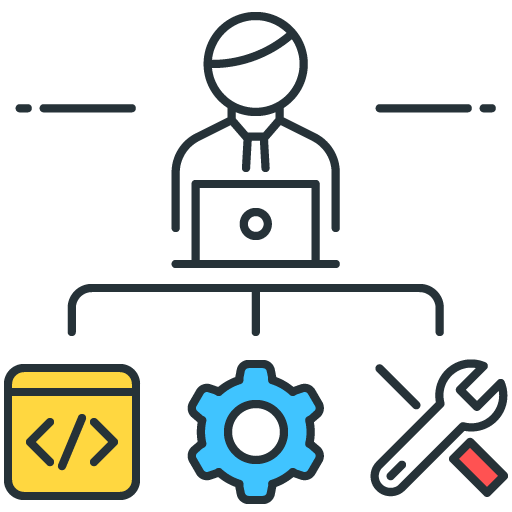
Start thinking more like an analyst.
Learn data science, natural language processing, and big data analysis essentials at your own pace.
Survival Strategies of Non-Migratory Birds in the Face of Climate Change
Among the myriad of bird species that occupy our environment, non-migratory and non-marine birds demonstrate two fundamental survival strategies: living fast and dying young or living longer and hedging bets. The choice between these two strategies depends heavily on their environment and breeding abilities.
Bird species residing in regions with a high annual temperature variability often exhibit shorter lifespans. They breed early and frequently, maximizing their chances of passing on their genes in a fluctuating environment. Conversely, birds inhabiting environments with a greater level of yearly variability have been found to live longer. They are inclined to skip breeding seasons when conditions are suboptimal, choosing instead to wait for more favorable circumstances.
However, the ongoing and escalating issue of climate change could pose a significant threat to these longer-lived bird species. Species that evolve faster may have an advantage in this situation, as they could be better equipped to adapt to rapidly rising temperatures. In essence, the pace of life could be a decisive factor in the struggle for survival in a changing climate.
Indeed, studies have found a significant correlation between environmental variability and lifespan in birds. Birds with shorter lifespans usually inhabit environments with high seasonality, while longer-living species are often found in areas where there is more variability from year to year.
Climate change could present a significant risk to certain long-lived bird species. This is particularly true for species in Southeast Asia, where temperatures that have traditionally been steady are now rising at a rate that these species are struggling to adapt to.
A comprehensive study involving 7,477 bird species discovered a tendency for bird species to have longer lifespans in environments that vary more over time. However, these longer-lived species may also be at greater risk due to more significant generational changes and slower adaptation to climate change.
On the other hand, bird species with faster paces of life, characterized by shorter lifespans and higher reproduction rates, may find themselves more vulnerable to consecutive bad environmental years. This vulnerability reduces their opportunities to breed and successfully raise offspring.
The potential threats to these bird species brought on by climate change underline the importance of conservation and management efforts. These should prioritize species that are most susceptible to climate change. Furthermore, it is necessary to contextualize rates of climate change in terms of historical environmental variability and the pace of life of different species. Understanding these complexities is a crucial step in preserving our diverse bird populations and the ecosystems they inhabit.
Science4Data is committed to cut through greenwashing and measure real impact. Join the journey to a sustainable future. Your actions matter.
The Power of Multi-Agent Systems in Shaping Business and Finance
In today’s fast-paced world, businesses are constantly looking for ways to optimize operations, improve decision-making, and stay ahead of the competition. One of the most exciting developments in artificial intelligence (AI) is the rise of Multi-Agent Systems (MAS). These systems, which involve multiple autonomous agents working together or interacting within an environment, are revolutionizing the way businesses operate, particularly in areas like automated trading, customer service, and negotiation. In this blog post, we’ll explore how MAS is shaping the future of AI in business and finance, highlighting the ways these intelligent agents are enhancing decision-making, creating smarter business models, and ultimately driving efficiency.
What Are Multi-Agent Systems (MAS)?
Before diving into their impact, let’s first understand what Multi-Agent Systems (MAS) are. At their core, MAS involve multiple AI agents that can operate independently but interact with one another to achieve specific goals. These agents may work collaboratively or competitively, depending on the environment and the problem they are trying to solve. In a business or financial context, these agents can represent anything from algorithms in trading platforms to virtual assistants that communicate with customers in real-time.
MAS are powerful because they can handle complex, decentralized tasks. Instead of relying on a single centralized system, MAS enables businesses to distribute tasks across multiple agents, each with its own set of responsibilities. This decentralized approach allows for greater scalability, flexibility, and adaptability in business operations.
Automated Trading: How MAS Are Changing the Financial Markets
One of the most significant applications of Multi-Agent Systems in finance is automated trading. Financial markets are incredibly dynamic, with prices fluctuating based on countless factors. In the traditional world of trading, human traders could only act as fast as their knowledge and intuition would allow. But with MAS, AI agents can analyze massive amounts of data in real-time and execute trades faster than any human could.
Here’s how it works: Imagine a set of agents that each have access to different data sources, such as economic indicators, stock prices, news articles, or even social media sentiment. Each agent analyzes the data, identifies trading opportunities, and executes trades based on predefined rules. These agents can operate independently, but they communicate and collaborate in real-time, working together to optimize portfolio performance.
The power of MAS in automated trading lies in its ability to process more data than any single human trader ever could, responding to changes in the market within fractions of a second. As a result, MAS-driven trading algorithms can help businesses optimize their investments, minimize risks, and maximize returns, making them indispensable in today’s competitive financial markets.
Customer Service: Transforming the Way Businesses Interact with Customers
Customer service is another area where MAS is having a major impact. Companies are constantly striving to improve the customer experience, and AI is playing a crucial role in achieving that goal. Enter Multi-Agent Systems, where multiple AI agents collaborate to handle a range of customer service tasks, from answering queries to processing orders and solving problems.
Consider the scenario where a company deploys several AI agents—each specializing in a particular area—within their customer service system. One agent could handle billing inquiries, another could assist with product troubleshooting, and yet another might manage returns and exchanges. These agents work in harmony, ensuring that customers receive quick, accurate responses no matter what issue they are facing.
In more advanced systems, agents can also collaborate with human employees, escalating issues that require a personal touch. This collaboration between AI and human agents enhances the efficiency of customer support teams and creates a seamless experience for customers.
Moreover, MAS-powered chatbots can engage with customers across multiple channels, including websites, mobile apps, and social media, further extending a company’s reach. By using MAS to handle routine customer interactions, businesses can reduce operational costs and allow human agents to focus on more complex and high-value tasks.
Negotiation Scenarios: AI Agents Collaborating for Better Business Deals
Multi-Agent Systems also show great potential in negotiation scenarios, particularly in business-to-business (B2B) environments. In these contexts, MAS can be used to simulate negotiations, where AI agents represent different parties and negotiate on behalf of their respective organizations. These agents can analyze the interests, constraints, and preferences of both sides to find mutually beneficial outcomes.
For example, imagine two companies negotiating a contract. Each company deploys its own set of AI agents that communicate with each other, propose terms, counter-offer, and make decisions based on predefined strategies. These agents can work together in real-time to find the best deal for both parties, while also learning from past negotiations to improve their future strategies.
This kind of MAS-based negotiation can significantly reduce the time and effort required to strike business deals. What’s more, by simulating different negotiation tactics and analyzing the outcomes, businesses can make better, data-driven decisions—improving overall profitability and long-term relationships.
Smarter Business Models and Enhanced Decision-Making
As businesses become more complex and data-driven, the need for smarter decision-making becomes crucial. Multi-Agent Systems enable businesses to create intelligent, adaptive business models that can continuously evolve based on market conditions and internal data.
One way MAS supports decision-making is by providing a more decentralized approach to problem-solving. Instead of relying on a single decision-maker or a top-down approach, MAS allows various agents to propose solutions, evaluate outcomes, and contribute to decision-making. This process encourages diversity of thought, faster response times, and more agile decision-making.
Moreover, MAS can enable businesses to run real-time simulations to predict how changes in one part of the business could impact the rest of the organization. For example, a retail business might use MAS to simulate how a pricing change or inventory adjustment could affect sales, customer satisfaction, and supply chain efficiency. By using these simulations, businesses can make more informed decisions that improve overall operations.
The future of business is not about choosing between humans or machines, but about creating smarter systems where both can collaborate and innovate together.” – Anonymous
The Potential of Multi-Agent Collaboration in Business Innovation
The true power of Multi-Agent Systems lies in the collaboration between agents—whether they’re working autonomously or alongside human counterparts. By leveraging the strengths of multiple AI agents, businesses can innovate faster, create more personalized experiences for customers, and ultimately outperform competitors.
In industries like finance, where split-second decisions can mean millions of dollars, MAS offer a competitive edge. In customer service, where speed and accuracy matter, MAS can streamline operations, reducing costs and improving customer satisfaction. And in B2B negotiations, MAS can lead to faster, more profitable deals.
As businesses continue to embrace digital transformation, we can expect MAS to become an even more integral part of operations, helping to shape smarter business models, improve decision-making, and foster innovation across industries.
Multi-Agent Systems are undoubtedly one of the most exciting developments in AI, and their impact on business and finance is only just beginning. From automated trading to customer service and negotiation, MAS are creating new possibilities for how businesses operate, collaborate, and make decisions. By harnessing the power of MAS, companies can optimize their operations, reduce costs, and drive innovation—all while staying ahead of the curve in an increasingly competitive landscape.
As AI continues to evolve, the future of business and finance will be shaped by the continued growth and integration of Multi-Agent Systems. It’s an exciting time to witness these intelligent agents not just work for us, but with us, as they create smarter, more efficient solutions for the businesses of tomorrow.
The AI Revolution in Private Equity & Market Research: Work Smarter, Invest Faster
Let’s be real—automation isn’t just a trend anymore. It’s a game-changer. In the fast-moving world of Private Equity (PE) and Market Research, staying ahead means working smarter, not harder. But does automation mean we’re all getting lazy? Absolutely not. If anything, it’s making us sharper, more strategic, and more capable of tackling the challenges that actually require human ingenuity.
Why Automation is No Longer Optional
Businesses today are navigating an era of rapid transformation. The volume of data available is growing at an unprecedented rate, and companies that fail to harness its power risk falling behind. Automation bridges the gap between raw data and actionable insights, allowing firms to work more efficiently and make informed decisions faster than ever before.
According to industry reports, businesses that leverage automation can achieve up to a 30% increase in productivity. Moreover, firms utilizing AI-powered solutions are not only optimizing their workflows but also uncovering opportunities that might have otherwise been missed.
Private Equity: Winning Deals with Automation
Private Equity firms rely on data, analysis, and speed to identify and execute winning deals. But let’s face it—traditional methods of due diligence and deal sourcing are time-consuming and prone to human error. That’s where automation steps in:
- AI-Powered Market Research for Private Equity: Automates the collection and analysis of industry trends, competitor insights, and financial performance data to support investment decisions.
- M&A Due Diligence Automation: AI-driven insights streamline deal evaluation by extracting key financial and legal insights from documents.
- Company Profiling & Competitive Intelligence: Analyzes company fundamentals, market positioning, and sentiment to identify high-value investment opportunities.
- Financial Spreading for Private Equity & M&A: Standardizes and automates financial statement analysis across target acquisitions, ensuring accurate risk assessment and valuation.
- Accelerating Deal Sourcing: Automation can scan and assess thousands of potential investment opportunities in real-time, dramatically reducing the time spent on manual research.
- Enhancing Due Diligence: AI-powered solutions analyze financial statements, legal documents, and market data, ensuring critical insights are captured efficiently.
- Optimizing Portfolio Management: Data analytics and predictive modeling support better performance tracking, risk forecasting, and value maximization.
By leveraging automation, Private Equity firms are not only cutting costs and saving time but also improving accuracy in their decision-making processes. This advantage can make the difference between a profitable deal and a missed opportunity.
Market Research: Cutting Through the Noise with AI
Market Research is another industry that thrives on data. With automation, researchers can process vast amounts of information in real time, uncovering trends and insights that would have taken weeks to compile manually.
- Processing Large-Scale Data Efficiently: AI tools can aggregate and analyze vast amounts of structured and unstructured data, helping researchers detect patterns and trends early.
- Improving Sentiment Analysis: Natural Language Processing (NLP) enables AI to gauge customer sentiment, providing businesses with deeper insights into consumer behavior and market dynamics.
- Enhancing Survey and Reporting: Automated research tools streamline survey creation, data collection, and reporting, ensuring faster and more accurate results.
- Identifying Market Shifts in Real Time: With AI-driven analytics, businesses can detect changes in consumer behavior and industry trends more quickly, allowing them to adapt their strategies proactively.
- Reducing Human Bias in Analysis: AI-driven research tools minimize human bias, ensuring a more objective and accurate interpretation of market data.
Automation Isn’t Making Us Lazy—It’s Making Us Smarter
Let’s put the misconception to rest: automation isn’t about replacing people; it’s about amplifying human potential. By offloading repetitive tasks, professionals in PE and Market Research can focus on building relationships, crafting bold strategies, and making high-impact decisions.
Instead of being buried under spreadsheets and reports, decision-makers can spend more time understanding their markets, fostering client relationships, and identifying innovative growth strategies. It’s about shifting from reactive decision-making to proactive leadership.
The Future of Business Belongs to Those Who Embrace Automation
The reality is that automation isn’t a luxury—it’s a necessity. Companies that fail to integrate automation into their workflows risk losing their competitive edge, while those that do will experience enhanced efficiency, deeper insights, and increased profitability.
This is the future of business, and it’s happening now. The firms that recognize automation’s power and use it to their advantage will lead the pack, while those who resist change will struggle to keep up.
So, the real question is: Are you ready to leverage automation, or will you let the competition outsmart you?
If you’re looking to integrate automation into your Private Equity or Market Research operations, now is the time to act. Reach out to industry experts, explore AI-powered solutions, and start making data work for you. The future is automated—will your business be part of it?
Let’s discuss how automation can transform your strategy. Get in touch today!
Nuclear Power Transition – Opportunities and Challenges for Northwest Colorado
As the decade approaches its end, the Hayden Station, a coal-fired power plant situated in northwest Colorado, is anticipated to retire. This impending development has sparked numerous discussions surrounding alternative energy sources. Among the numerous options being explored, nuclear power has emerged as a promising candidate due to its low carbon emissions and high energy generation capabilities.
As part of the transition towards nuclear power, a local energy development initiative is mulling over the possibility of hosting a temporary storage site for nuclear waste. The waste would be transported to the site in vehicles designed to resist crashes, ensuring maximum safety during the transit process.
However, this plan has not been without its share of controversy. There have been rising concerns about the potential safety and environmental risks associated with transporting and storing nuclear waste in the area. These fears are not unfounded, given the notorious reputation nuclear waste has for its potential long-term environmental hazards.
Further adding to the complexity of the situation, the U.S. Department of Energy has set a target to open a temporary waste site by 2038. To this end, they have extended an invitation to interested communities to submit their applications by this fall.
The communities of northwest Colorado have been considering various alternatives to coal plants. One such alternative that has been proposed is a storage facility for spent nuclear fuel. This proposal, made by a regional energy group, has elicited mixed responses from the local communities.
Some view this proposal as an economic opportunity, one that may create jobs and stimulate economic growth in the area. Others, however, are more apprehensive, worrying about the safety implications of storing spent nuclear fuel close to their homes.
Proposals are now being reviewed for the establishment of such a facility, a decision that will have significant implications for the affected communities. The stakes are high, as the future of energy production in northwest Colorado depends on the outcome. The choices made today will play a crucial role in shaping the region’s path toward sustainable energy and economic growth.
Science4Data is committed to cut through greenwashing and measure real impact. Join the journey to a sustainable future. Your actions matter.
Rapid Glacier Melt – A Clear Sign of Worsening Climate Change
Climate change continues to make its presence known in every corner of the world, and its effects on the world’s mountain glaciers are staggering. A recent study has shown that these glaciers are shrinking at a rate over twice as fast as what was observed in the early 2000s. This alarming acceleration in glacial melt is primarily due to global warming and is causing a cascade of ecological and socio-economic impacts.
In the year 2023 alone, a record 604 billion tons of ice were lost from the world’s glaciers. This marks a significant increase in the rate of ice loss and is a clear signal of intensifying climate change. This finding was published in a study in the esteemed journal Nature, which based its conclusions on 233 estimates of glacier weight changes from around the world.
Since the turn of the century, our planet’s glaciers have lost more than 7 trillion tons of ice. The speed of this ice loss varies from region to region, with Alaska’s glaciers melting the fastest, losing approximately 67 billion tons of ice annually. In contrast, Central Europe’s glaciers have shrunk by 39% since 2000.
It’s crucial to understand that melting glaciers contribute more to sea level rise than ice loss from larger bodies such as Greenland or Antarctica. The overall glacier loss rate is leading to worse future predictions due to the combination of improved data and increasing warming.
The most comprehensive scientific analysis to date shows that global glaciers are melting at an unprecedented rate due to climate change. However, it’s important to note that regional losses are highly variable, with some areas experiencing more severe impacts than others.
In the face of this alarming reality, it’s more important than ever for corporations and governments to step up their efforts in mitigating climate change. HSBC, one of the world’s largest banking and financial services organizations, has unfortunately delayed its net-zero goal from 2030 to 2050. This delay is attributed to a slower real economy transition and inadequate government decarbonization policies.
In the UK, electricity and gas network owners have reaped billions in profits due to policy failures by Ofgem, the government regulator for electricity and downstream natural gas markets. This was revealed in a report by Citizens Advice, shedding light on the lack of accountability in the face of this global crisis.
The rapid melting of the world’s mountain glaciers is a stark reminder of the urgent need to address climate change. As the Earth continues to warm, the consequences of inaction become increasingly catastrophic. It’s imperative that we all – individuals, corporations, and governments alike – take meaningful steps to mitigate the impacts of climate change.
Science4Data is committed to cut through greenwashing and measure real impact. Join the journey to a sustainable future. Your actions matter.
Arctic Blast 2025 – Record-Breaking Winter Storm Hits the Southeast
In the southeastern United States, an Arctic blast brought about record-breaking low temperatures and unprecedented snowfall on January 19. A frigid wave that swept through the region left residents shivering and buried cities under a heavy blanket of snow. Among those affected, Baton Rouge, LA, recorded 7 degrees on January 22, marking the coldest temperature since records began in 1930.
As the cold spell continued to grip the region, Texas experienced significant snowfall. The Beaumont-Port Arthur Area, in particular, recorded 4.5 inches of snowfall on January 21, a record for this area. The unusual weather conditions not only left residents and city officials scrambling but also posed significant challenges to emergency services and utility crews.
The extreme weather event did not spare Louisiana, Baton Rouge, New Orleans, and Mobile, AL, as it moved eastward between January 21 and 22. These regions faced record-breaking snowfall, adding to the already harsh winter conditions.
Researchers have linked the Arctic blast to a stratospheric polar vortex stretching event, suggesting potential ties to climate change. The polar vortex, a large area of low pressure and cold air surrounding the Earth’s North and South poles, has been known to occasionally stretch and send cold air southward, causing such extreme weather events.
However, the weather took an unexpected turn as New Orleans, despite being covered in snow and well below freezing in late January, experienced record high temperatures of around 80 degrees Fahrenheit ahead of the Super Bowl last February 9. This temperature swing added an extra layer of complexity to the already unpredictable weather patterns.
The severe January 2025 storm was not just a meteorological phenomenon but also a significant economic event. The storm resulted in fierce winds, low temperatures, and caused at least $500 million in damage, making it one of the Gulf Coast’s most destructive winter storms.
Despite the ongoing effects of climate change, cold weather extremes are still expected. However, these events may be less severe and less frequent, potentially having a greater impact due to decreased risk perception and preparedness. This recent storm serves as a stark reminder of the power of nature and the importance of being prepared for all extremes, regardless of climate trends.
Science4Data is committed to cut through greenwashing and measure real impact. Join the journey to a sustainable future. Your actions matter.








